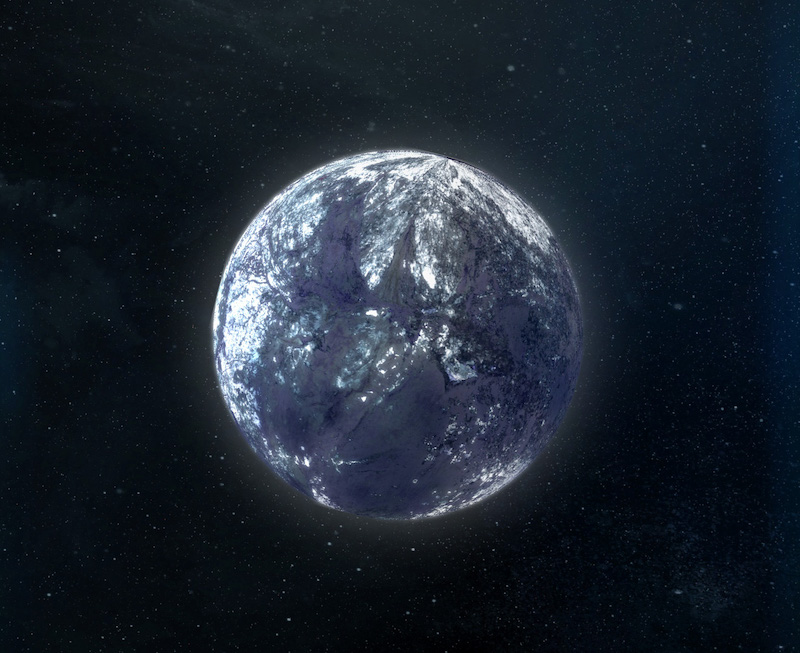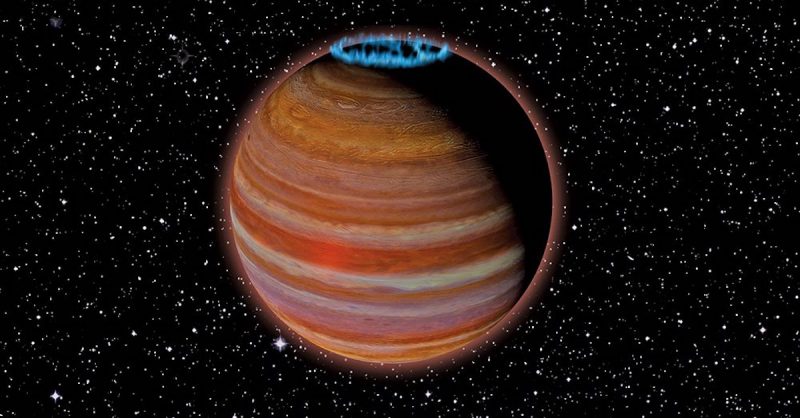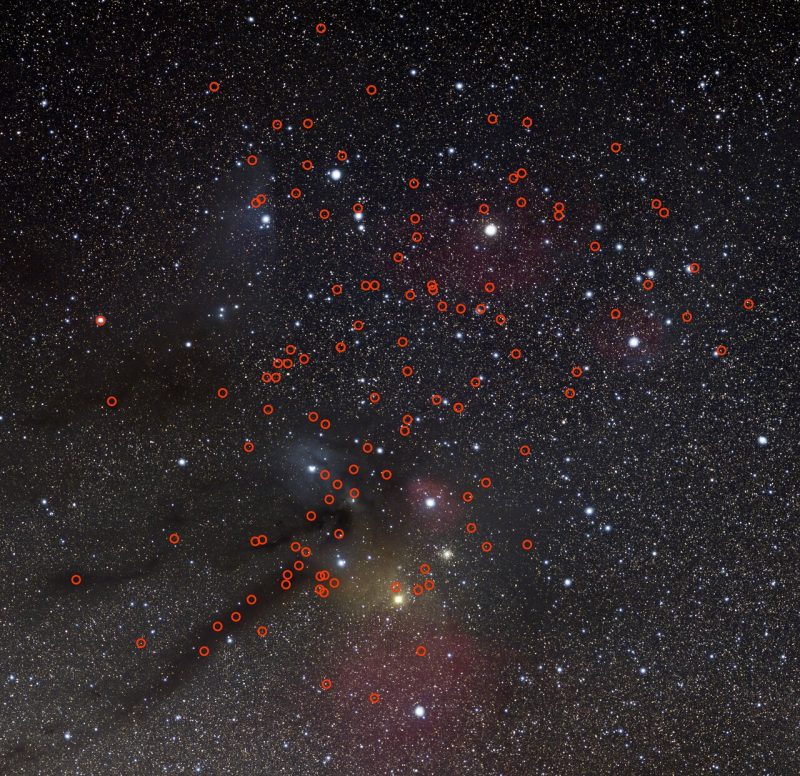
Planets that don’t orbit any star are called rogue planets. They’re the free-floating nomads of our galaxy, drifting in interstellar space. And a new study suggests that there are many more of these untethered worlds than star-bound worlds. So we’re talking about not billions, but trillions of possible rogue planets in our home galaxy, the Milky Way. On July 19, 2023, researchers at NASA and Japan’s Osaka University put a number on how many rogue planets the upcoming Nancy Grace Roman Space Telescope mission might be able to find. They said the telescope – scheduled to launch by May 2027 – could discover as many as 400 Earth-mass rogue planets.
How cool is that?
The new study has even identified its first Earth-mass rogue planet candidate, the second such planet yet found.
The researchers are preparing two new papers to publish in a future issue of The Astronomical Journal.
Most known rogue planets are like Jupiter
We already know of the existence of quite a few rogue planets that are not Earth-mass in size. For example, here’s a post from January 2022, where astronomers reported somewhere between 70 and 170 rogue planet discoveries, with the planets all approximately like our solar system’s biggest planet, Jupiter, in mass.
But this 2023 study does suggest an overall number of trillions of rogue planets in our galaxy. That’s many more than previously believed. Co-author David Bennett, a senior research scientist at NASA’s Goddard Space Flight Center, said:
We estimate that our galaxy is home to 20 times more rogue planets than stars, trillions of worlds wandering alone.
[But] this is the first measurement of the number of rogue planets in the galaxy that is sensitive to planets less massive than Earth.

Rogue planets and microlensing
The new study’s findings are based on a nine-year survey called Microlensing Observations in Astrophysics (MOA), conducted at the Mount John University Observatory in New Zealand. Gravitational microlensing observations happen when an object such as a star or planet comes into almost perfect alignment with another background object. The closer object bends the light coming from the more distant object, acting as sort of a natural lens. This is because the mass of the nearer object distorts the fabric of space-time.
Takahiro Sumi at Osaka University, and lead author of the paper with a new estimate of our galaxy’s rogue planets, stated that:
Microlensing is the only way we can find objects like low-mass free-floating planets and even primordial black holes. It’s very exciting to use gravity to discover objects we could never hope to see directly.
This study’s Earth-mass rogue planet candidates
So the new study is suggesting there should be many more Earth-size rogue planets than previously thought. In fact, the study suggests that the smaller rogue planets might be more common than large rogue planets. As Sumi noted:
We found that Earth-size rogues are more common than more massive ones. The difference in star-bound and free-floating planets’ average masses holds a key to understanding planetary formation mechanisms.
The scientists said that since these planets are smaller and lighter, they might more easily be flung out into space by gravitational interactions in their original solar systems.

Roman could find 400 Earth-mass rogue planets
NASA’s upcoming Nancy Grace Roman Space Telescope, due to launch by May 2027, will be a powerful new tool to find more of these free-floating worlds. Naoki Koshimoto at Osaka University, who led the paper announcing the detection of a candidate terrestrial-mass rogue world, said:
Roman will be sensitive to even lower-mass rogue planets since it will observe from space. The combination of Roman’s wide view and sharp vision will allow us to study the objects it finds in more detail than we can do using only ground-based telescopes, which is a thrilling prospect.
And the researchers said the telescope could find many more than previous estimates thought possible. Before, scientists estimated it would find about 50 Earth-mass rogue planets. But in the new study, that number has increased substantially, to 400.
In addition, Japan’s Prime-focus Infrared Microlensing Experiment (PRIME) telescope, at the South African Astronomical Observatory in Sutherland, will complement Roman’s observations. Unlike Roman, it will observe in near-infrared wavelengths. Both PRIME and Roman will be needed, since each microlensing event can only occur once. But the microlensing events do take time, as well. Simultaneous observations, therefore, are critical. Koshimoto explained:
A microlensing signal from a rogue planet can take from a few hours up to about a day, so astronomers will have a chance to do simultaneous observations with Roman and PRIME.
The simultaneous observations will also enable astronomers to measure the masses of these nomad planets better than ever before.
Rogue planets are exotic worlds
Previous studies have already hinted at what some of these worlds might be like. In 2018, astronomers discovered evidence for a large rogue planet with wild auroras. Another study in 2021 suggested that moons of rogue planets might actually be good places to look for life. In some circumstances they could even have liquid water.
Last year, Irina K. Romanovskaya (Irina Mullins), a professor of physics and astronomy at Houston Community College System, even suggested that rogue planets might be ideal destinations for aliens colonizing the galaxy.
Bottom line: A new study predicts that NASA’s upcoming Roman space telescope will find as many as 400 Earth-mass rogue planets. These worlds drift freely in space, unbound to any star.
The post Rogue planets by the trillions in our Milky Way? first appeared on EarthSky.
from EarthSky https://ift.tt/7V4DjUF

Planets that don’t orbit any star are called rogue planets. They’re the free-floating nomads of our galaxy, drifting in interstellar space. And a new study suggests that there are many more of these untethered worlds than star-bound worlds. So we’re talking about not billions, but trillions of possible rogue planets in our home galaxy, the Milky Way. On July 19, 2023, researchers at NASA and Japan’s Osaka University put a number on how many rogue planets the upcoming Nancy Grace Roman Space Telescope mission might be able to find. They said the telescope – scheduled to launch by May 2027 – could discover as many as 400 Earth-mass rogue planets.
How cool is that?
The new study has even identified its first Earth-mass rogue planet candidate, the second such planet yet found.
The researchers are preparing two new papers to publish in a future issue of The Astronomical Journal.
Most known rogue planets are like Jupiter
We already know of the existence of quite a few rogue planets that are not Earth-mass in size. For example, here’s a post from January 2022, where astronomers reported somewhere between 70 and 170 rogue planet discoveries, with the planets all approximately like our solar system’s biggest planet, Jupiter, in mass.
But this 2023 study does suggest an overall number of trillions of rogue planets in our galaxy. That’s many more than previously believed. Co-author David Bennett, a senior research scientist at NASA’s Goddard Space Flight Center, said:
We estimate that our galaxy is home to 20 times more rogue planets than stars, trillions of worlds wandering alone.
[But] this is the first measurement of the number of rogue planets in the galaxy that is sensitive to planets less massive than Earth.

Rogue planets and microlensing
The new study’s findings are based on a nine-year survey called Microlensing Observations in Astrophysics (MOA), conducted at the Mount John University Observatory in New Zealand. Gravitational microlensing observations happen when an object such as a star or planet comes into almost perfect alignment with another background object. The closer object bends the light coming from the more distant object, acting as sort of a natural lens. This is because the mass of the nearer object distorts the fabric of space-time.
Takahiro Sumi at Osaka University, and lead author of the paper with a new estimate of our galaxy’s rogue planets, stated that:
Microlensing is the only way we can find objects like low-mass free-floating planets and even primordial black holes. It’s very exciting to use gravity to discover objects we could never hope to see directly.
This study’s Earth-mass rogue planet candidates
So the new study is suggesting there should be many more Earth-size rogue planets than previously thought. In fact, the study suggests that the smaller rogue planets might be more common than large rogue planets. As Sumi noted:
We found that Earth-size rogues are more common than more massive ones. The difference in star-bound and free-floating planets’ average masses holds a key to understanding planetary formation mechanisms.
The scientists said that since these planets are smaller and lighter, they might more easily be flung out into space by gravitational interactions in their original solar systems.

Roman could find 400 Earth-mass rogue planets
NASA’s upcoming Nancy Grace Roman Space Telescope, due to launch by May 2027, will be a powerful new tool to find more of these free-floating worlds. Naoki Koshimoto at Osaka University, who led the paper announcing the detection of a candidate terrestrial-mass rogue world, said:
Roman will be sensitive to even lower-mass rogue planets since it will observe from space. The combination of Roman’s wide view and sharp vision will allow us to study the objects it finds in more detail than we can do using only ground-based telescopes, which is a thrilling prospect.
And the researchers said the telescope could find many more than previous estimates thought possible. Before, scientists estimated it would find about 50 Earth-mass rogue planets. But in the new study, that number has increased substantially, to 400.
In addition, Japan’s Prime-focus Infrared Microlensing Experiment (PRIME) telescope, at the South African Astronomical Observatory in Sutherland, will complement Roman’s observations. Unlike Roman, it will observe in near-infrared wavelengths. Both PRIME and Roman will be needed, since each microlensing event can only occur once. But the microlensing events do take time, as well. Simultaneous observations, therefore, are critical. Koshimoto explained:
A microlensing signal from a rogue planet can take from a few hours up to about a day, so astronomers will have a chance to do simultaneous observations with Roman and PRIME.
The simultaneous observations will also enable astronomers to measure the masses of these nomad planets better than ever before.
Rogue planets are exotic worlds
Previous studies have already hinted at what some of these worlds might be like. In 2018, astronomers discovered evidence for a large rogue planet with wild auroras. Another study in 2021 suggested that moons of rogue planets might actually be good places to look for life. In some circumstances they could even have liquid water.
Last year, Irina K. Romanovskaya (Irina Mullins), a professor of physics and astronomy at Houston Community College System, even suggested that rogue planets might be ideal destinations for aliens colonizing the galaxy.
Bottom line: A new study predicts that NASA’s upcoming Roman space telescope will find as many as 400 Earth-mass rogue planets. These worlds drift freely in space, unbound to any star.
The post Rogue planets by the trillions in our Milky Way? first appeared on EarthSky.
from EarthSky https://ift.tt/7V4DjUF

Aucun commentaire:
Enregistrer un commentaire